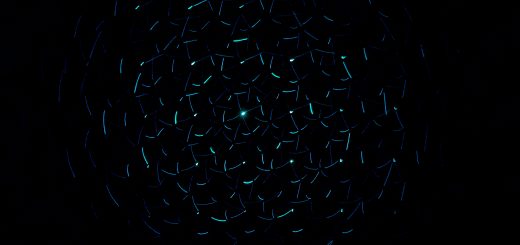How to Integrate Arts into STEM Education

Hey there, amazing readers! 🖐️ Just a quick note: yes, we know there are a lot of ads here. Trust us, we get it—it’s not the prettiest look, but they help us keep this blog alive and kicking. Those pesky little ads cover the costs of all the behind-the-scenes magic, from hosting and tech stuff to creating content we hope you’ll love.
We’re committed to delivering quality posts, and your support (even just sticking around despite the ads) means everything to us. So, bear with us, and thanks for helping us keep the good vibes rolling. Now, on to the fun stuff! 😉
TRANSLATE BUTTON AT THE END OF THE ARTICLE
A Quick Overview
Integrating arts into STEM education has become a hot topic in the realm of educational innovation.
This approach combines the disciplines of Science, Technology, Engineering, and Mathematics with the creative elements of Arts to create a more holistic and engaging learning experience.
By infusing arts into STEM, students can explore complex concepts in a more hands-on and immersive way, fostering creativity, critical thinking, and problem-solving skills.
In this article, we will delve into the importance of arts in STEM education, explore the benefits of integrating arts into STEM, provide strategies for incorporating arts into STEM lessons, discuss examples of art-infused STEM activities, and examine the impact of arts on student engagement in STEM.
Importance of Arts in STEM Education
Arts play a crucial role in STEM education by providing a creative outlet for students to express themselves and think outside the box.
While STEM subjects focus on logic, analysis, and problem-solving, the arts bring a different perspective, allowing students to explore their creativity and imagination.
By incorporating arts into STEM, educators can cater to the diverse learning styles of students, making the curriculum more inclusive and engaging.
Furthermore, the arts help students develop essential soft skills such as communication, collaboration, and adaptability, which are vital in today’s ever-evolving workforce.
Benefits of Integrating Arts into STEM
The integration of arts into STEM education offers a myriad of benefits for students.
One of the key advantages is that it enhances critical thinking skills by encouraging students to approach problems from multiple perspectives.
Through art-infused STEM lessons, students learn to think creatively, analyze information, and make connections between different concepts.
Moreover, integrating arts into STEM can increase student engagement and motivation, as it provides a more interactive and hands-on learning experience.
This approach also fosters a greater appreciation for the arts and helps students develop a well-rounded skill set that is essential for success in the 21st-century workforce.
Strategies for Incorporating Arts into STEM
To successfully integrate arts into STEM education, educators can employ various strategies that cater to different learning styles and preferences.
Some effective approaches include:
Incorporating art projects into STEM lessons to allow students to visually represent their understanding of concepts.
Using music, dance, or drama to introduce complex STEM topics in a creative and engaging way.
Encouraging students to create multimedia presentations or digital artworks to showcase their learning in STEM subjects.
Collaborating with local artists or arts organizations to bring real-world applications of STEM concepts to the classroom.
Examples of Art-Infused STEM Lessons
Art-infused STEM lessons can take many forms and provide students with unique opportunities to explore the intersection of creativity and innovation.
For example:
Using visual art techniques to illustrate scientific processes or mathematical concepts.
Incorporating music or sound design in engineering projects to enhance the sensory experience.
Creating interactive digital animations to teach coding and computer science principles.
Designing theatrical performances that showcase the impact of technology on society and the environment.
Collaboration Between Arts and STEM Teachers
Collaboration between arts and STEM teachers is essential for successful integration of arts into STEM education.
By working together, educators can combine their expertise to create interdisciplinary lessons that seamlessly blend creative expression with scientific inquiry.
Collaboration can also help teachers identify common goals and learning objectives, ensuring that arts-infused STEM lessons are aligned with curriculum standards.
Furthermore, by sharing resources and best practices, arts and STEM teachers can enhance the overall quality of education and provide students with a well-rounded learning experience.
Overcoming Barriers to Integrating Arts in STEM
While the integration of arts into STEM education offers numerous benefits, there are also challenges that educators may face.
Some common barriers include limited resources, time constraints, and resistance to change.
To overcome these obstacles, educators can:
Advocate for the importance of arts in STEM education to secure funding and support.
Provide professional development opportunities for teachers to learn how to integrate arts into STEM lessons effectively.
Foster a culture of collaboration and creativity within the school community to promote innovation and experimentation.
Seek out partnerships with local artists, museums, and cultural organizations to enhance arts-infused STEM experiences for students.
Impact of Arts on Student Engagement in STEM
The integration of arts into STEM has a profound impact on student engagement and motivation.
By incorporating creative elements into STEM lessons, educators can capture students’ interest and make learning more enjoyable and meaningful.
Arts-infused STEM activities promote active participation, critical thinking, and problem-solving skills, which are essential for success in STEM fields.
Additionally, by tapping into students’ creativity and imagination, educators can foster a love for learning and inspire the next generation of innovators and problem solvers.
Enhancing Creativity Through Art in STEM
Art plays a crucial role in enhancing creativity in STEM education by providing students with opportunities to explore, experiment, and innovate.
Through art-infused STEM lessons, students can develop their creative thinking skills, imagination, and ability to generate new ideas.
Creativity is a key component of innovation, and by integrating arts into STEM, educators can nurture this essential skill in students.
By engaging in hands-on art projects, students can learn to think outside the box, take risks, and push the boundaries of traditional problem-solving methods.
Professional Development for Arts-STEM Integration
Professional development is essential for educators looking to integrate arts into STEM education successfully.
By providing teachers with training, resources, and support, schools can ensure that arts-infused STEM lessons are well-planned, engaging, and aligned with curriculum standards.
Professional development opportunities can include workshops, seminars, conferences, and online courses that focus on strategies for integrating arts into STEM, best practices for collaboration between arts and STEM teachers, and assessment methods for evaluating the effectiveness of arts-infused STEM lessons.
Resources for Implementing Arts in STEM Curriculum
There are a wealth of resources available to educators looking to implement arts in the STEM curriculum.
Some valuable resources include:
Arts organizations and museums that offer educational programs, workshops, and exhibits related to STEM topics.
Online platforms and websites that provide lesson plans, project ideas, and teaching resources for integrating arts into STEM.
Professional development opportunities such as conferences, webinars, and courses focused on arts-STEM integration.
Collaboration tools and platforms that facilitate communication and sharing between arts and STEM teachers, allowing for the creation of interdisciplinary lessons and projects.
Evaluating the Effectiveness of Arts in STEM
To evaluate the effectiveness of arts in STEM education, educators can use a variety of assessment methods to measure student learning outcomes and engagement.
Some strategies for evaluating the impact of arts in STEM include:
Observing student participation and engagement during art-infused STEM lessons.
Collecting student work samples and projects to assess understanding of STEM concepts.
Administering pre- and post-assessments to measure student growth and learning progress.
Soliciting feedback from students, parents, and colleagues to gauge the impact of arts-infused STEM lessons on student motivation and interest in STEM subjects.
Future Trends in Arts Integration in STEM Education
The future of arts integration in STEM education looks promising, with a growing emphasis on creativity, innovation, and interdisciplinary learning.
As technology continues to advance, educators will have more tools and resources at their disposal to create dynamic and engaging arts-infused STEM lessons.
Additionally, there is a growing recognition of the importance of soft skills such as creativity, critical thinking, and collaboration in the workforce, making arts integration in STEM even more relevant.
Moving forward, we can expect to see more schools and educators embracing arts in STEM education as a means of preparing students for success in the 21st century and beyond.
Conclusion
Integrating arts into STEM education offers a wealth of benefits for students, including enhanced creativity, critical thinking, and problem-solving skills.
By combining the disciplines of Science, Technology, Engineering, Mathematics, and Arts, educators can create a more engaging and immersive learning experience that caters to diverse learning styles.
Through collaboration between arts and STEM teachers, strategic planning, and the use of innovative resources, schools can successfully implement arts-infused STEM lessons that inspire creativity, foster a love for learning, and prepare students for success in the ever-evolving world of education and work.
As the future trends in arts integration in STEM education continue to evolve, educators can look forward to new opportunities to unlock students’ potential, nurture their creativity, and empower them to become the innovators and problem solvers of tomorrow.

The Enlightenment Journey is a remarkable collection of writings authored by a distinguished group of experts in the fields of spirituality, new age, and esoteric knowledge.
This anthology features a diverse assembly of well-experienced authors who bring their profound insights and credible perspectives to the forefront.
Each contributor possesses a wealth of knowledge and wisdom, making them authorities in their respective domains.
Together, they offer readers a transformative journey into the realms of spiritual growth, self-discovery, and esoteric enlightenment.
The Enlightenment Journey is a testament to the collective expertise of these luminaries, providing readers with a rich tapestry of ideas and information to illuminate their spiritual path.
Our Diverse Expertise 🌟
While our primary focus is on spirituality and esotericism, we are equally passionate about exploring a wide range of other topics and niches 🌍📚. Our experienced team is dedicated to delivering high-quality, informative content across various subjects ✨.
To ensure we provide the most accurate and valuable insights, we collaborate with trusted experts in their respective domains 🧑🏫👩🏫. This allows us to offer well-rounded perspectives and knowledge to our readers.
Our blog originally focused on spirituality and metaphysics, but we’ve since expanded to cover a wide range of niches. Don’t worry—we continue to publish a lot of articles on spirituality! Frequently visit our blog to explore our diverse content and stay tuned for more insightful reads.





